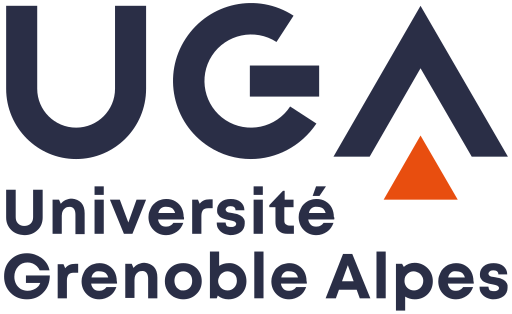@article{RCP25_1983__33__1_0,
author = {Nagasawa, M. and Yasue, K.},
title = {A {Statistical} {Model} of {Mesons}},
journal = {Les rencontres physiciens-math\'ematiciens de Strasbourg -RCP25},
note = {talk:1},
pages = {1--48},
publisher = {Institut de Recherche Math\'ematique Avanc\'ee - Universit\'e Louis Pasteur},
volume = {33},
year = {1983},
language = {en},
url = {https://www.numdam.org/item/RCP25_1983__33__1_0/}
}
TY - JOUR AU - Nagasawa, M. AU - Yasue, K. TI - A Statistical Model of Mesons JO - Les rencontres physiciens-mathématiciens de Strasbourg -RCP25 N1 - talk:1 PY - 1983 SP - 1 EP - 48 VL - 33 PB - Institut de Recherche Mathématique Avancée - Université Louis Pasteur UR - https://www.numdam.org/item/RCP25_1983__33__1_0/ LA - en ID - RCP25_1983__33__1_0 ER -
%0 Journal Article %A Nagasawa, M. %A Yasue, K. %T A Statistical Model of Mesons %J Les rencontres physiciens-mathématiciens de Strasbourg -RCP25 %Z talk:1 %D 1983 %P 1-48 %V 33 %I Institut de Recherche Mathématique Avancée - Université Louis Pasteur %U https://www.numdam.org/item/RCP25_1983__33__1_0/ %G en %F RCP25_1983__33__1_0
Nagasawa, M.; Yasue, K. A Statistical Model of Mesons. Les rencontres physiciens-mathématiciens de Strasbourg -RCP25, Conférences de : M. Nagasawa, J.-E. Bjork, J. Ecalle, K. Gawedzki, G. Lebeau, A. Martin, Tome 33 (1983), Exposé no. 1, 48 p. https://www.numdam.org/item/RCP25_1983__33__1_0/
1. , Gauge Theories of Weak Interactions, (Cambridge University Press, 1976). | MR
2. and , Gauge Fields Introduction to Quantum Theory, (Benjamin, Reading 1980). | MR | Zbl
3. and , Phys. Rep. 36C, 137 (1978).
4. , Unitary Symmetry and Elementary Particles, (Academic Pres, New York 1978). | MR
5. (Editor), Theory of Elementary Particles Extended in Space-Time, Prog. Theor. Phys. Suppl. No 67 (1979). | MR
6. and (Editors), Phys. Rep. 23C, 237 (1976).
7. One of
8. , Eigenfunction Expansions Associated with Second-order Differential Equations, I (Oxford, 1962). | Zbl
9. We do not adopt the notion of "mixture of quark states" in this paper. It seems, however, plausible that the decay mode of
10. Compare two functions:
11. We are assuming that
12. For details and other applications of the model, see , Segregation of a population in an environment. J. Math. Biology (1980), 9, 213-235 | Zbl
An application of the segregation model for septation of Escherichia coli. J. Theor. Biol. (1981), 90, 445-455
A statistical model of systems of interacting diffusion-particles (in preparation).
, , & , A stochastic model for the orbits of planets and satellites : An interpretation of Titius-Bode law (preprint). | Zbl
13. In higher dimensions we need duality arguments, which will not come across in one-dimension. See (1980).
14. For stochastic differential equations see, e.g. and , Introduction to stochastic differential equations, Proc. of Intern. Symp. SDE Kyoto, 1976 (Ed. by K. Itô) i-xxx, Kinokuniya Book-Store, Co. LTD, Tokyo. | Zbl
15. (1966) A class of Markow processes associated with non-linear parabolic equations, Proc. Nat. Acad. Sci. 56, 1907-1911. | MR | Zbl
(1967) Propagation of chaos for a class of non-linear parabolic equations. Lecture series in differential equations 7, Catholoc Univ. 41-57. | MR | Zbl
and (1977), The Vlasov dynamics and its fluctuations in 1/N limit of interacting classical particles, Comm. Math. Phys. 56, 101-113. | MR | Zbl
(to appear), Limit theorems for certain diffusion processes with interaction, Taniguchi International Symposium, July 1982. | MR | Zbl
Critical dynamics and fluctuations for a mean field model of cooperative behavior. J. of Statistical Physics (1983), 31, 29-85. | MR
16. Time reversal plays an important role in this model, although it is hidden in one dimension. For time reversal of diffusion processes see : , Ueber die Umkehrung der Naturgesetze. Berliner Berichte (1931), Sitzung der physikalisch-mathematischen Klasse, 144-153.
, Zur Umkehrbarkeit der Statistischen Naturgesetze, Math. Ann. 113 (1937), 766-772. | MR | Zbl
, Time reversions of Markov processes, Nagoya Math. Journal 24 (1964), 177-204. | MR | Zbl
and , To reverse a Markov process, Acta Math. 123, (1969), 225-251. | MR | Zbl
, Le returnement du temps, d'aprés Chung et Walsh, Lecture Notes in Math. 191, (1971), 213-245 (Springer). | Numdam | MR
and , An application of time reversal of Markov processes to a problem of population genetics, Advances in Appl. Probability 11, (1979), 457-478. | MR | Zbl
, On local time and time reversal, Journées de probabilités, 1983, Bern.
17. , Interacting diffusions and Schrödinger equation. Journées de Probabilités, 1983, Bern.
Interrelation between Schrödinger équation and diffusion processes has been discussed by Fényes and Nelson, see: , Eine wahrscheinlichkeitstheoretische Begründung und Interpretation der Quantemechanik, Z. für Physik, 132 (1952), 81-106
, Derivation of Schrödinger equation from Newtonian Mechanics, Phys. Rev. 150 (1966), 1076-1085
Stochastic Quantization : A Review, International Journal of Theor. Phys. 18 (1979), 861-913. | MR | Zbl
The interpretation of a diffusion process as a typical partiale of a system of interacting particles is different from theirs and was given in Nagasawa (1980).
18. See Theorem 6.1 of Nagasawa (1980) (in the proof, (6.11) should be read as
19. The following arguments are based on discussions with .
20. For example take
21. This is the so called "piecing together (or revival) technique" of the theory of Markov processes. Cf. Theorem 1 and 2 of , Basic models of Branching Processes, Proc. of 41st Session of ISI, New Delhi, 1977, XLVII (2), 423-445.









